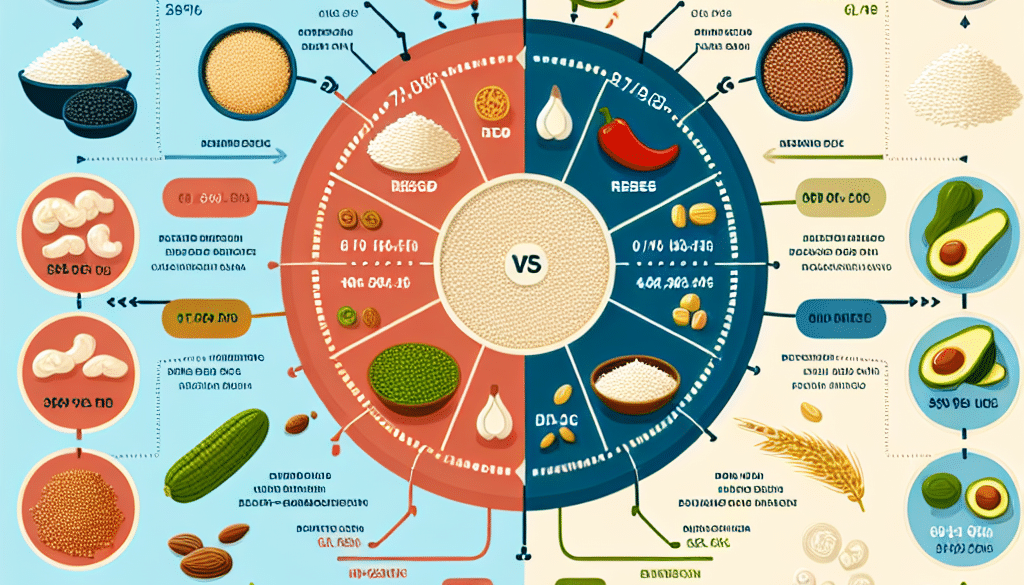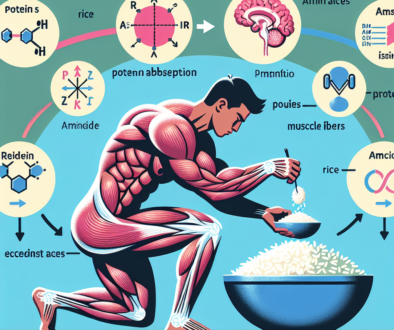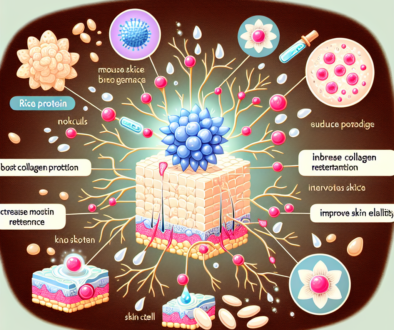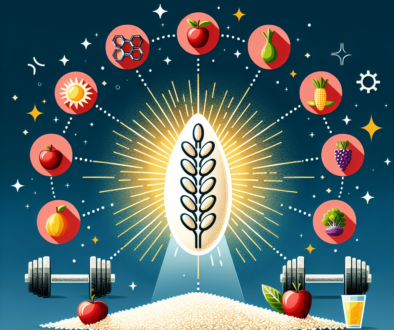Is Quinoa A Good Replacement For Rice?
-
Table of Contents
- Quinoa as a Rice Alternative: Nutritional Benefits and Considerations
- Nutritional Comparison of Quinoa and Rice
- Culinary Uses and Versatility
- Sustainability and Environmental Impact
- Health Considerations and Dietary Restrictions
- Conclusion: Quinoa as a Rice Substitute
- Discover ETprotein’s High-Quality Protein Products
Quinoa as a Rice Alternative: Nutritional Benefits and Considerations
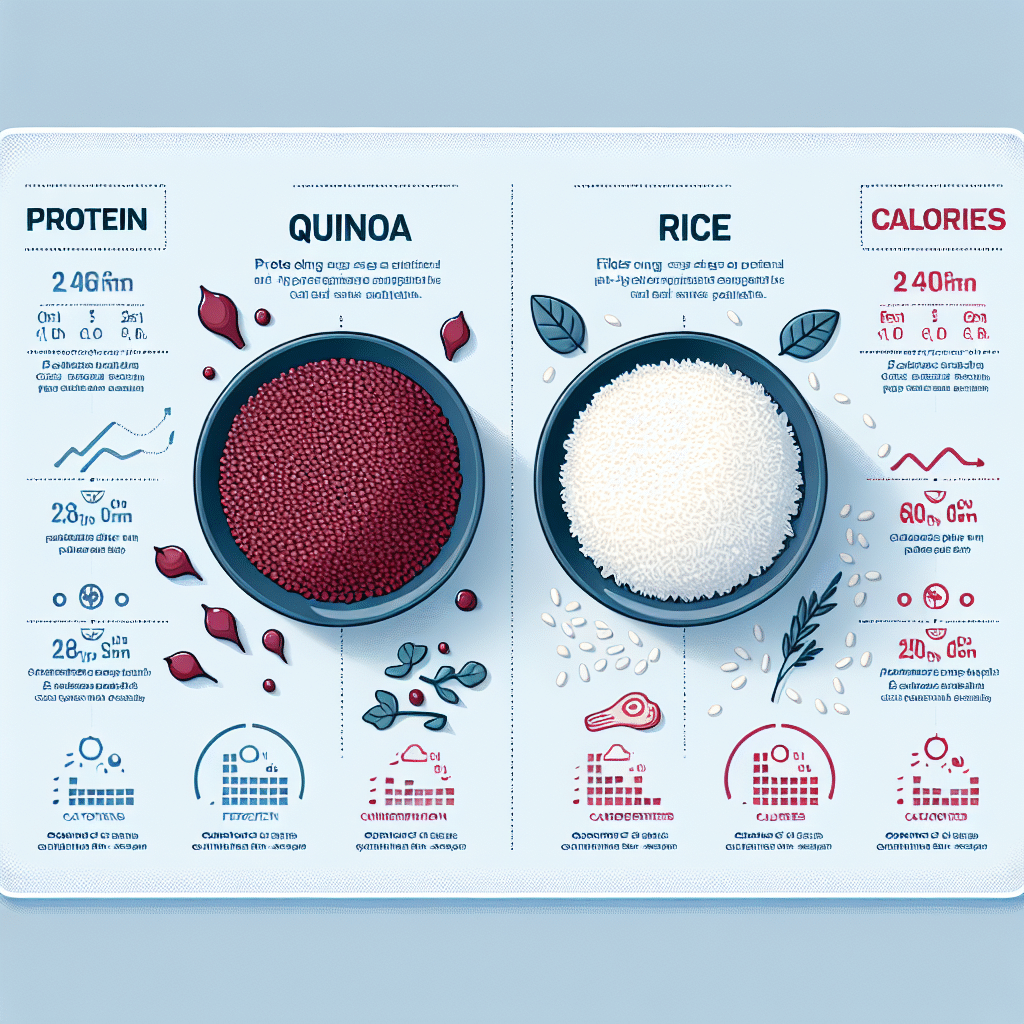
Quinoa has been hailed as a superfood in recent years, and its popularity as a health-conscious alternative to traditional staples like rice is on the rise. But is quinoa truly a good replacement for rice? This article delves into the nutritional profiles, culinary uses, and sustainability aspects of quinoa compared to rice, providing a comprehensive look at whether quinoa can take the place of rice in your diet.
Nutritional Comparison of Quinoa and Rice
When considering quinoa as a substitute for rice, it’s essential to compare their nutritional values. Quinoa is a seed that is prepared and eaten similarly to a grain. It is a complete protein, meaning it contains all nine essential amino acids that the body cannot produce on its own. This is a rare quality in plant-based foods, making quinoa an excellent option for vegetarians and vegans.
- Protein Content: Quinoa offers approximately 8 grams of protein per cup, significantly higher than the 4-5 grams of protein found in a similar serving of white rice.
- Fiber: With 5 grams of fiber per cup, quinoa exceeds the 0.6 grams found in white rice, promoting better digestion and satiety.
- Vitamins and Minerals: Quinoa is rich in vitamins B and E, magnesium, iron, potassium, calcium, phosphorus, and various beneficial antioxidants. In contrast, white rice is often stripped of many nutrients during processing, although it is typically enriched with iron and some B vitamins.
- Low Glycemic Index: Quinoa has a glycemic index of 53 compared to white rice’s glycemic index of 73, making it a better choice for blood sugar management.
It’s important to note that brown rice, a whole grain, is nutritionally superior to white rice. It contains more fiber, vitamins, and minerals than its white counterpart, though it still falls short of quinoa’s protein and fiber content.
Culinary Uses and Versatility
Quinoa’s versatility in the kitchen is comparable to that of rice. It can be used in a variety of dishes, from salads and soups to stir-fries and even desserts. Its slightly nutty flavor and fluffy texture make it a pleasant alternative for those looking to diversify their diet.
- Salads: Quinoa adds a protein boost to salads and can serve as a base for a variety of ingredients.
- Breakfast: Cooked quinoa can be used in place of oatmeal, topped with fruits, nuts, and a sweetener of choice.
- Gluten-Free Options: For individuals with celiac disease or gluten sensitivity, quinoa is a naturally gluten-free substitute for rice.
- Side Dishes: Quinoa can be seasoned and served as a side dish, much like rice, complementing a wide range of main courses.
However, quinoa does have a slightly higher cost than rice, which may be a consideration for some consumers. Additionally, it contains saponins, natural compounds that can impart a bitter taste if not rinsed off before cooking.
Sustainability and Environmental Impact
The sustainability of quinoa cultivation compared to rice farming is another factor to consider. Quinoa is a hardy plant that can grow in poor soil with little water, making it a more sustainable crop in arid regions. Rice, on the other hand, typically requires large amounts of water to grow, which can lead to water scarcity issues in some areas.
- Water Usage: Quinoa requires significantly less water than rice, making it a more eco-friendly option in drought-prone regions.
- Land Use: Quinoa can be cultivated in marginal lands where other crops may not thrive, potentially reducing the need for deforestation and biodiversity loss.
- Carbon Footprint: The carbon footprint of quinoa is generally lower than that of rice, especially when considering the methane emissions associated with rice paddies.
However, the rising popularity of quinoa has led to concerns about its impact on traditional farming communities in South America, where it is a staple food. Increased demand has driven up prices, making it less accessible to those who have relied on it for generations.
Health Considerations and Dietary Restrictions
For individuals with specific health conditions or dietary restrictions, quinoa may offer benefits over rice. Its high protein and fiber content can be advantageous for weight management and muscle building. Additionally, its lower glycemic index makes it a better choice for those managing diabetes.
- Weight Management: The fiber and protein in quinoa can help with satiety, potentially aiding in weight loss efforts.
- Muscle Building: As a complete protein, quinoa supports muscle growth and repair, which is crucial for athletes and bodybuilders.
- Diabetes Management: Quinoa’s lower glycemic index means it has a less dramatic effect on blood sugar levels.
However, for those with kidney issues, the higher levels of protein and certain minerals in quinoa may need to be considered within the context of their dietary restrictions.
Conclusion: Quinoa as a Rice Substitute
In conclusion, quinoa offers a wealth of nutritional benefits and can be a versatile and sustainable alternative to rice. Its high protein and fiber content, along with a lower glycemic index, make it an attractive option for health-conscious individuals. While it may come with a higher price tag and some concerns about global impact, quinoa’s benefits are hard to ignore. Whether you’re looking to improve your diet or reduce your environmental footprint, quinoa is worth considering as a rice replacement.
Discover ETprotein’s High-Quality Protein Products
If you’re interested in incorporating more plant-based proteins into your diet, ETprotein offers a range of organic and high-purity protein products. Their selection includes organic rice protein, pea protein, and other plant-based options that are non-GMO and allergen-free. ETprotein caters to various industries, ensuring that you can find the right protein solution for your needs. To learn more about their offerings or to request a sample, reach out to ETprotein today.
About ETprotein:
ETprotein, a reputable protein and L-(+)-Ergothioneine (EGT) Chinese factory manufacturer and supplier, is renowned for producing, stocking, exporting, and delivering the highest quality organic bulk vegan proteins and L-(+)-Ergothioneine. They include Organic rice protein, clear rice protein, pea protein, clear pea protein, watermelon seed protein, pumpkin seed protein, sunflower seed protein, mung bean protein, peanut protein, and L-(+)-Ergothioneine EGT Pharmaceutical grade, L-(+)-Ergothioneine EGT food grade, L-(+)-Ergothioneine EGT cosmetic grade, L-(+)-Ergothioneine EGT reference grade and L-(+)-Ergothioneine EGT standard. Their offerings, characterized by a neutral taste, non-GMO, allergen-free attributes, with L-(+)-Ergothioneine purity over 98%, 99%, cater to a diverse range of industries. They serve nutraceutical, pharmaceutical, cosmeceutical, veterinary, as well as food and beverage finished product distributors, traders, and manufacturers across Europe, USA, Canada, Australia, Thailand, Japan, Korea, Brazil, and Chile, among others.
ETprotein specialization includes exporting and delivering tailor-made protein powder and finished nutritional supplements. Their extensive product range covers sectors like Food and Beverage, Sports Nutrition, Weight Management, Dietary Supplements, Health and Wellness Products, and Infant Formula, ensuring comprehensive solutions to meet all your protein needs.
As a trusted company by leading global food and beverage brands and Fortune 500 companies, ETprotein reinforces China’s reputation in the global arena. For more information or to sample their products, please contact them and email sales(at)ETprotein.com today.

